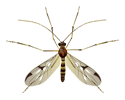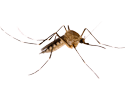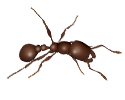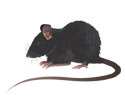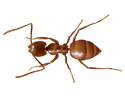Houston Rodents 101

Houston is known for its advancements in space exploration, its extensive list of major league teams: the Houston Astros, Houston Texans, Houston Rockets, Houston Dynamo’s, and Houston Dash, and its extensive rodent infestation problem. While this infestation problem is seasonal – typically during hurricane season and winter – it is important to take preemptive measures to ensure an infestation does not occur. Understanding when rodents are most prominent and the most common types of rodents in Houston are the first steps.
If you suspect you may have a rodent infestation, contact us to schedule an appointment.
When Will I See Rodents Most?
Hurricane season is the most popular time of year for Houston rodents to venture outside of their homes. However, limiting their activity to hurricane season is not entirely true. Anytime there are large rainfalls and flooding, we should be extra cautious when it comes to rodent invasion. Flooding forces rodents to venture inside.
There are various types of rodents that are more common to Houston. Here’s what they are and what you can expect:
Roof Rats
Roof rats are given their name because of their ability to climb exceptionally well – which explains why they are commonly found in the insulation of attics and roofs. Roof rats also nest above ground in trees, bushes and other areas of vegetation making them a threat high in the air.
Issues Caused: Roof rats tend to cause damage by gnawing walls, wiring, pipes and other parts of your home, ultimately creating a potential fire hazard.
Prevention Tactics: Because of their tendency to aim high, your best bet is to focus on access points to your roof and attic. Fix any loose shingles, place a tight-fitting cap on chimneys, and cover vents. If you have trees reaching your roof, trim branches back at least six feet from your home to reduce the likelihood that rats will use them as a superhighway.
Norway Rats
Commonly mistaken as roof rats, Norway rats are known for their lack of skillful climbing. Because of this, you are more likely to catch them on the ground inhabiting crawl spaces and rooms on the first floor. These rodents prefer nesting in underground burrows such as the foundation of buildings and homes, beneath woodpiles, and near gardens and riverbanks. Norway rats are nocturnal, so you may not see them until the infestation gets out of control.
Issues Caused: Some more subtle signs of rats are burrows, gnaw marks on food packaging, utility lines, drywall and furniture, and rub marks from the oil (called sebum) on their bodies along pathways they’ve built. These pathways are most likely caused by numerous rats due to their tendency to be social by nature.
Prevention Tactics: You can prevent rodents by eliminating food and water sources, fixing leaky pipes and faucets, and keeping garbage bins at a distance from your home. Like roof rats, you’ll want to ensure all cracks and crevices in the foundation are sealed, as this is where Norway rats are most likely to enter.
Mice (Deer Mice and House Mice)
The signs and dangers of mice are similar across all species. Signs of mice include droppings on the floor, in drawers, cabinets, and pantry areas. You may also hear them scurrying or scratching as they move behind the walls in your home. The two most common mice in Houston are deer mice and house mice.
Issues Caused: Much like rats, they tend to chew at critical equipment such as wiring. Mice are known to contaminate stored food and have the potential to transmit diseases via their droppings and urine.
Prevention Tactics: Because of their small size, controlling mice can be extremely difficult. Exclusion is the best method for preventing these pests, as well as removing access to trash cans and other food sources around your home.
The sight of a mouse or rat is always alarming – and when there’s one, there are probably more to be found. If you’ve seen a rodent in your home, or suspect you have a rodent infestation, give Holder’s a call to ensure your safety and your homes safety.
Houston Rodents 101 Serving
Houston
Beaumont | Conroe | Spring | Pasadena | The Woodlands | Richmond | Galveston
Baytown | Bryan | Cleveland | College Station | Cypress | Pearland | Sugar Land
Home » Houston Rodents 101


